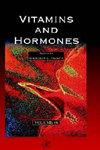DNA甲基化在2型糖尿病发病中的作用。
4区 医学
Q3 Biochemistry, Genetics and Molecular Biology
引用次数: 1
摘要
2型糖尿病(T2D)是一种以β细胞功能障碍发展为特征的代谢疾病,伴有肝脏、肌肉和脂肪组织胰岛素抵抗。虽然导致其发展的分子机制尚不完全清楚,但对其原因的调查显示,在大多数情况下,其发展和进展是多因素的。此外,表观遗传修饰介导的调控相互作用,如DNA甲基化、组蛋白尾部修饰和调控rna,已被发现在T2D的病因学中发挥重要作用。在本章中,我们讨论了DNA甲基化及其动力学在T2D病理特征发展中的作用。本文章由计算机程序翻译,如有差异,请以英文原文为准。
DNA methylation in the pathogenesis of type 2 diabetes.
Type 2 diabetes (T2D) is a metabolic disease characterized by the development of β-cell dysfunction with hepatic, muscular and adipose tissue insulin resistance. Although the molecular mechanisms leading to its development are not entirely known, investigations of its causes reveal a multifactorial contribution to its development and progression in most cases. In addition, regulatory interactions mediated by epigenetic modifications such as DNA methylation, histone tail modifications and regulatory RNAs have been found to play a significant role in the etiology of T2D. In this chapter, we discuss the role of DNA methylation and its dynamics in the development of the pathological features of T2D.
求助全文
通过发布文献求助,成功后即可免费获取论文全文。
去求助
来源期刊

Vitamins and Hormones
医学-内分泌学与代谢
CiteScore
3.80
自引率
0.00%
发文量
66
审稿时长
6-12 weeks
期刊介绍:
First published in 1943, Vitamins and Hormones is the longest-running serial published by Academic Press. In the early days of the serial, the subjects of vitamins and hormones were quite distinct. The Editorial Board now reflects expertise in the field of hormone action, vitamin action, X-ray crystal structure, physiology, and enzyme mechanisms. Vitamins and Hormones continues to publish cutting-edge reviews of interest to endocrinologists, biochemists, nutritionists, pharmacologists, cell biologists, and molecular biologists. Others interested in the structure and function of biologically active molecules like hormones and vitamins will, as always, turn to this series for comprehensive reviews by leading contributors to this and related disciplines.
 求助内容:
求助内容: 应助结果提醒方式:
应助结果提醒方式:


